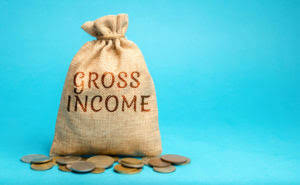
The applicable convention (discussed earlier under Which Convention Applies) affects how you figure your depreciation deduction for the year you place your property in service and for the year you dispose of it. It determines how much of double declining depreciation the recovery period remains at the beginning of each year, so it also affects the depreciation rate for property you depreciate under the straight line method. Use the applicable convention, as explained in the following discussions.
Fixed Asset Assumptions
In 2023, Beech Partnership placed in service section 179 property with a total cost of $2,940,000. The partnership must reduce its dollar limit by $50,000 ($2,940,000 − $2,890,000). Its maximum section 179 deduction is $1,110,000 ($1,160,000 − $50,000), and it elects to expense that amount. The partnership’s taxable income from the active conduct of all its trades or businesses for the year was $1,110,000, so it can deduct the full $1,110,000.
Double Declining Balance Method Formula (DDB)
Instead, it sells them through wholesalers or by similar arrangements in which a dealer’s profit is not intended or considered. Maple can depreciate the leased cars because the cars are not held primarily for sale to customers in the ordinary course of business, but are leased. In some cases, it is not clear whether property is held for sale (inventory) or for use in your business.
Full-Month, Mid-Month, Mid-Year, Mid-Quarter Conventions
See the Instructions for Form 1065 for information on how to figure partnership net income (or loss). However, figure taxable income without regard to credits, tax-exempt income, the section 179 deduction, and guaranteed payments under section 707(c) of the Internal Revenue Code. The total cost you can deduct each year after you apply the dollar limit is limited to the taxable income from the active conduct of any trade or business during the year. Generally, you are considered https://www.bookstime.com/ to actively conduct a trade or business if you meaningfully participate in the management or operations of the trade or business. This chapter explains what property does and does not qualify for the section 179 deduction, what limits apply to the deduction (including special rules for partnerships and corporations), and how to elect it. Under the income forecast method, each year’s depreciation deduction is equal to the cost of the property, multiplied by a fraction.
After you figure the full-year depreciation amount, figure the deductible part using the convention that applies to the property. You own a rental home that you have been renting out since 1981. If you put an addition on the home and place the addition in service this year, you would use MACRS to figure your depreciation deduction for the addition.

Depreciation rates used in the declining balance method could be 150%, 200% (double), or 250% of the straight-line rate. When the depreciation rate for the declining balance method is set as a multiple, doubling the straight-line rate, the declining balance method is effectively the double-declining balance method. Over the depreciation process, the double depreciation rate remains constant and is applied to the reducing book value each depreciation period.
- You multiply the adjusted basis of the property ($1,000) by the 40% DB rate.
- Sankofa, a calendar year corporation, maintains one GAA for 12 machines.
- If you made this election, continue to use the same method and recovery period for that property.
- It allocates $40,000 of its section 179 deduction and $50,000 of its taxable income to Dean, one of its partners.
- If you do not claim depreciation you are entitled to deduct, you must still reduce the basis of the property by the full amount of depreciation allowable.
In 2023, you bought and placed in service $1,160,000 in machinery and a $25,000 circular saw for your business. You elect to deduct $1,135,000 for the machinery and the entire $25,000 for the saw, a total of $1,160,000. Your $25,000 deduction for the saw completely recovered its cost.
How to calculate Depreciation
You multiply the reduced adjusted basis ($58) by 100% to arrive at the depreciation deduction for the sixth year ($58). You figure the depreciation rate under the SL method by dividing 1 by 5, the number of years in the recovery period. The result is 20%.You multiply the adjusted basis of the property ($1,000) by the 20% SL rate. You apply the half-year convention by dividing the result ($200) by 2.

- Since it always charges a percentage on the base value, there will always be leftovers.
- This approach ensures that depreciation expense is directly tied to an asset’s production or usage levels.
- Remember, in straight line depreciation, salvage value is subtracted from the original cost.
- The best way to understand how it works is to use your own numbers and try building the schedule yourself.
- For other listed property, allocate the property’s use on the basis of the most appropriate unit of time the property is actually used (rather than merely being available for use).
- We take monthly bookkeeping off your plate and deliver you your financial statements by the 15th or 20th of each month.
- Divide a short tax year into 4 quarters and determine the midpoint of each quarter.